This wonderful Cornish workshop and museum is dedicated to the legacy of studio pottery trailblazer Bernard Leach
Peter Eugene Ball: A Farewell Sculpted with Mirth and Melancholy
Peter Eugene Ball: A Farewell Sculpted with Mirth and Melancholy
8 Aug 2021
This summer, head to the recently restored 13th-century Chapter House at Southwell Minster to discover the sublime driftwood figures of sculptor Peter Eugene Ball’s rich imagination.
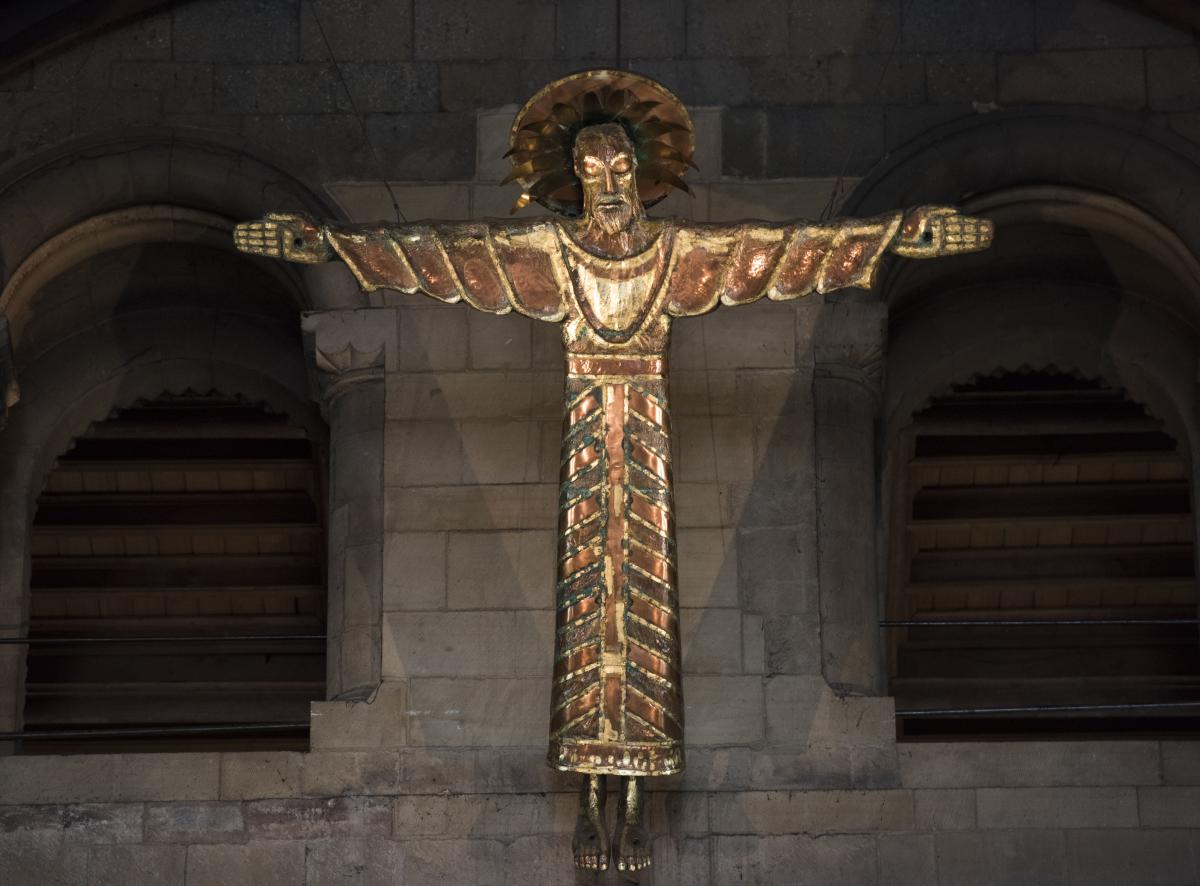
Christus Rex, © Tracey Whitefoot Photography
Chances are you’ve come into contact with the work of Peter Eugene Ball – you just might not know it. It’s there under Ely Cathedral’s awesome octagon or in the side aisles at Southwark and Winchester. Contemporary yet rooted in ancient histories, his sculptures, both sacred and secular, touch on African folk art and the roundness of the Romanesque. Ball was introduced to the latter’s familiarly semi-secular forms at Nottinghamshire’s Southwell Minster in 1954: ‘I was 11 and was wowed by the place.’ It began a lifelong love affair that reaches a final chapter this summer when Southwell hosts Ball’s last major exhibition: Farewell to All That.
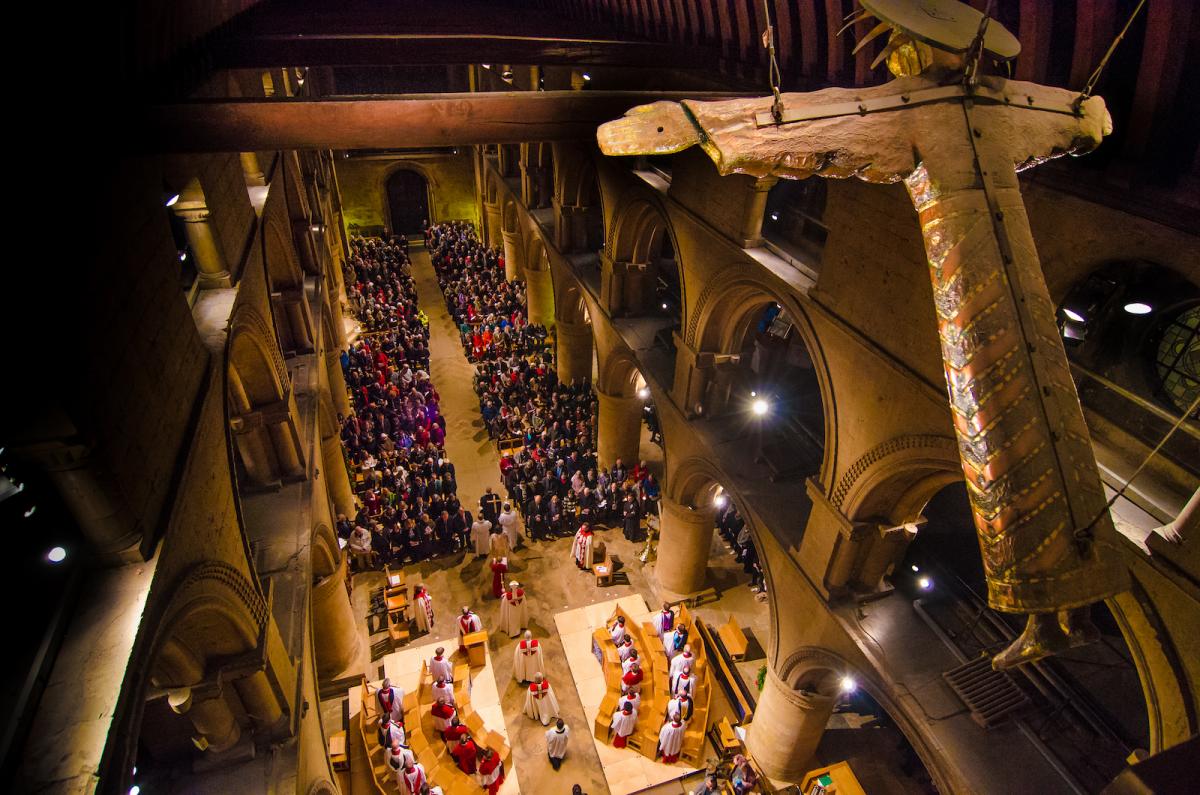
Christus Rex, photo © Chris Knapton
‘I’ve been associated with Southwell for years, in a secular way,’ Ball says. And some of his most important works are in the Norman cathedral, just 10 miles from his Newark home and studio. Above the nave hovers the 1987 Christus Rex, a beneficent but tremendous figure. ‘It’s a set piece, theatrical,’ he explains, ‘but it fits; it’s part of the building – architecturally and atmospherically.’ More pleading is the 1990 Light of the World, while his Pieta from 1993 and Ecce Homo of four years later speak of darker stories.
As well as marking a long association with Southwell, Ball’s summer show is also the apotheosis of a 60-year career. Born in Coventry, where he attended the city’s College of Art, he began using driftwood and other found objects to create his figures, often with mythological or literary origins. So it was perhaps inevitable that he would be drawn to the ‘greatest story ever told’, though Ball has no particular faith. ‘My background was irreligious,’ he insists, ‘definitely through my father, who was quite a disagreeable man.’ (This isn’t the only time Ball points to pain in his past.) ‘But then I started to see stuff in churches.’
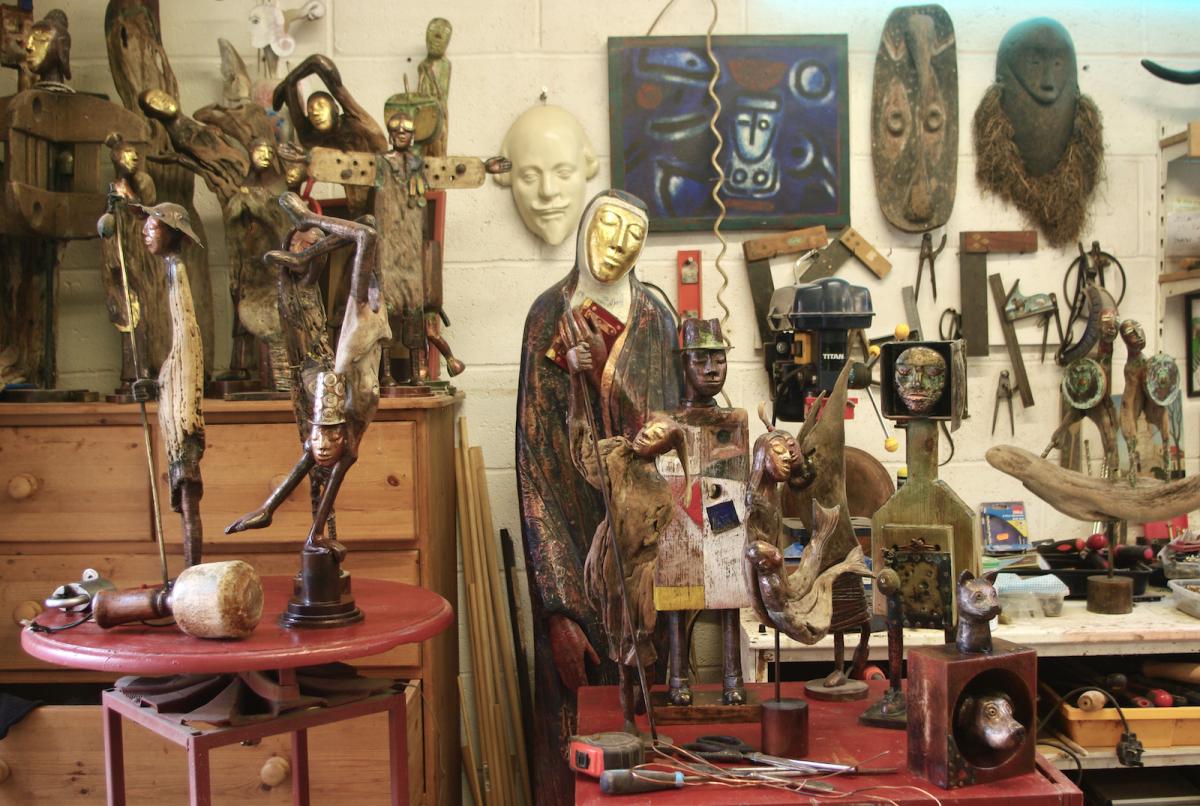
The artist’s studio
Drawn to African, pre-Columbian and Celtic art, ‘all essentially religious’, he also saw the weeping Madonnas and violent crucifixions of southern France and Spain: ‘There’s something exquisite in pain.’ But he quickly laughs away any such contemplation – what he calls pretension. ‘It’s odd that I’m now known for my sacred sculptures, when 1982 was really when I first made religious art.’ And there are certainly as many secular works in Ball’s exhibition as there are sacred.
‘I love driftwood and the seashore, but I don’t think at the time it’s spiritual. I’m a materialist.’
Nonetheless, with Ball’s saints and seraphs gracing our churches and cathedrals, I wonder whether sculpture has become a kind of spiritual act, but he’s swift to respond. ‘No, it’s a process – a technical thing. Does that disappoint you?’ he sniggers. ‘I love driftwood and the seashore, but I don’t think at the time it’s spiritual. I’m a materialist. What the material does is make me think about things I can’t express in any other way. A piece of wood is like a blank sheet of paper; it meets me halfway.’
There is, however, a notable exception in this latest body of work, Hawton Madonna, which Ball carved from a 14th-century beam removed from the belfry floor of another church close to home. ‘I know the date of the wood and that makes an impression. Like I’m onto something.’ The resulting life-size statue, smeared in virginal blue, with prayerfully passive faces, will sit at the heart of the Southwell show.
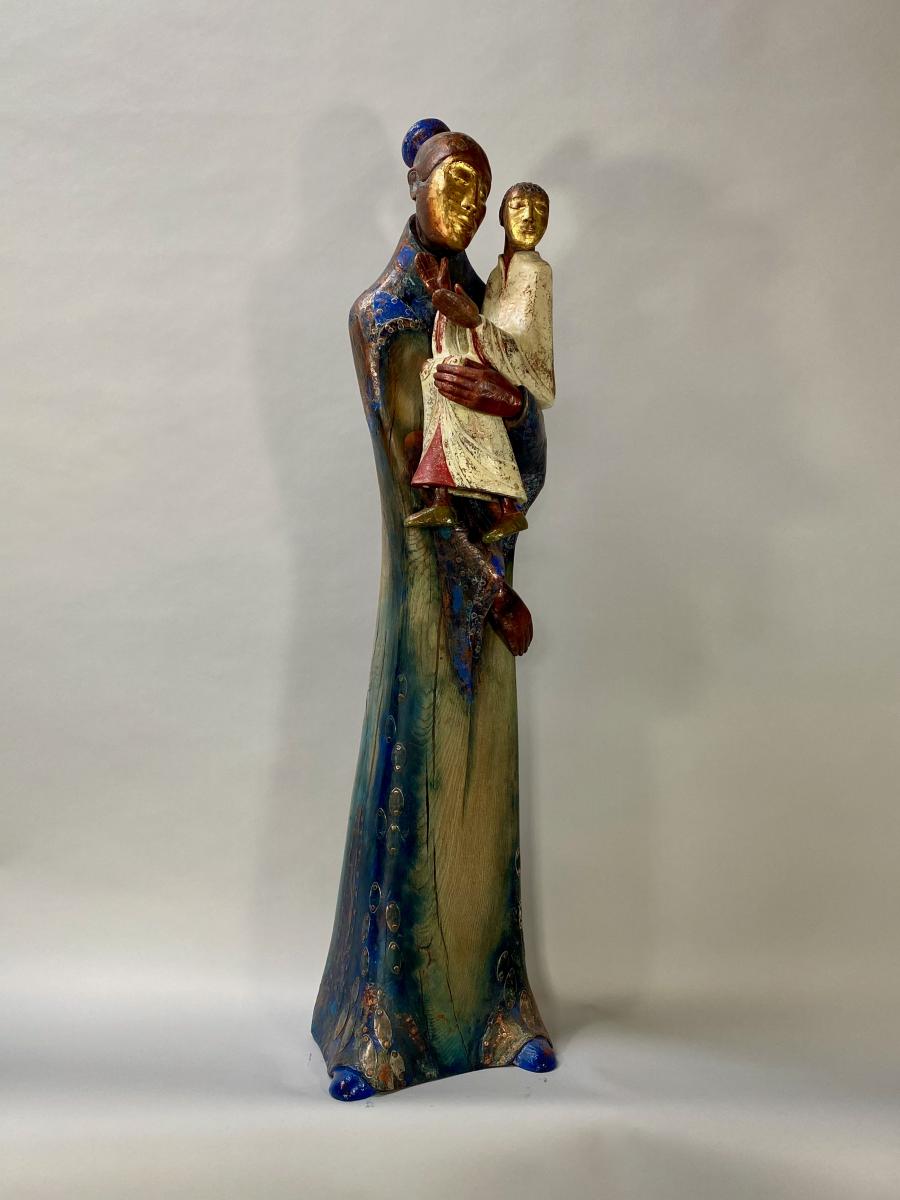
Hawton Madonna
Yet for all its reverence, Ball has another joker up his sleeve: his largest Ship of Fools to date. ‘I am melancholy yet also very jolly,’ he says. ‘And it’s important to have a sense of humour, a balance.’ There’s definitely wit to the toy-like ship, with its ragtag bunch going they know not where. But I wonder whether that’s now a bit like Ball. Why, after all, has he called the exhibition Farewell to All That? It comes from Robert Graves, he explains. ‘Back in the 60s, I was deeply influenced by a book called The White Goddess, an anatomy of the origins of poetry. But before that, Graves had written his war autobiography, Goodbye to All That, and the title came back to me,’ he says thoughtfully. ‘But goodbye is a final thing; farewell might mean see you again.’
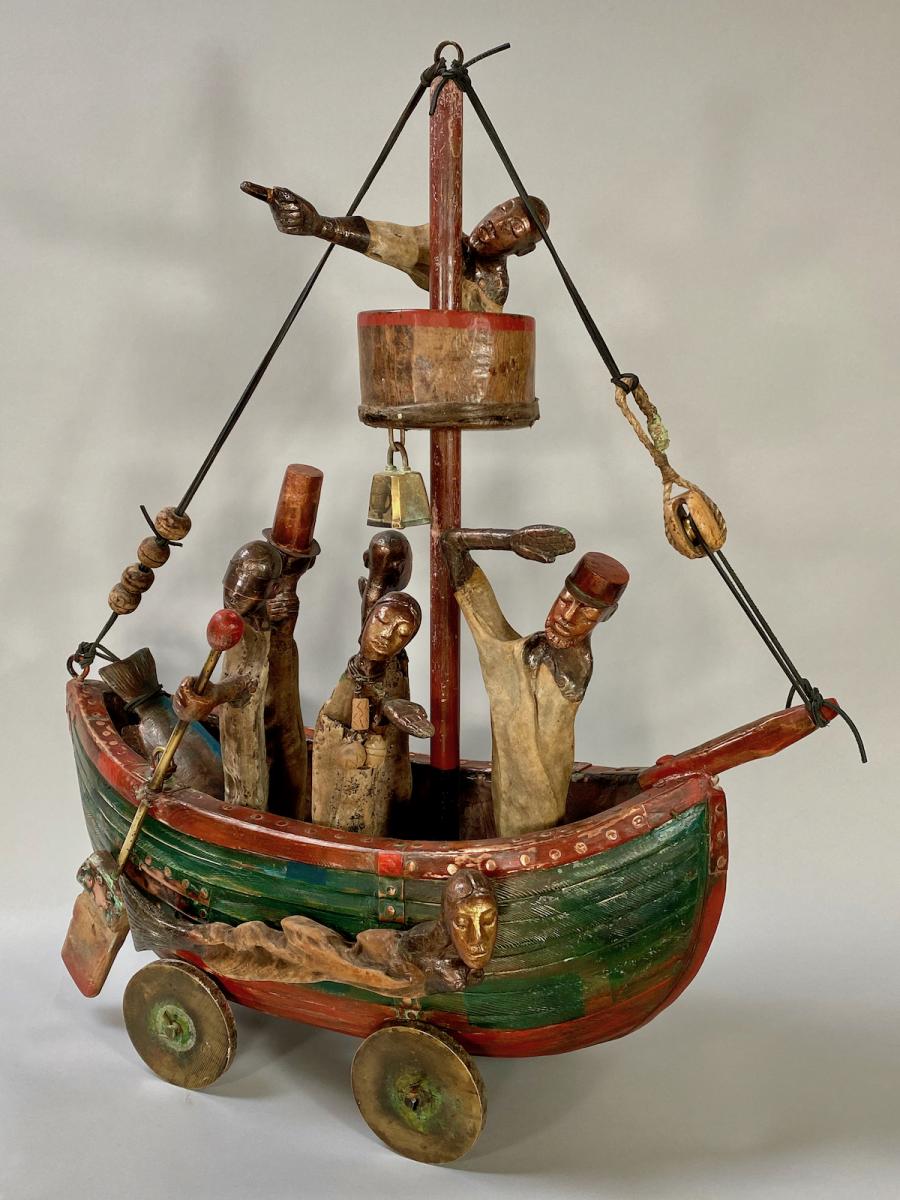
Ship of Fools
After years of producing work for religious spaces – almost certainly more than any other living artist – Ball’s sculptures are an intrinsic part of our spiritual landscape. But it’s not as easy as it once was. ‘I’m getting old,’ he says, adopting another voice. There’s the physical act of working with huge timbers, ‘but mentally, too’, Ball underlines. ‘Artists find a tune and whistle it for ever,’ he says, recalling the words of a departed friend. ‘It’s sad but true. And it can prevent you from experimenting. I want to branch out.’
But when I look at the sheer array of work to be displayed this summer, with its tributes to Mondrian and the Bauhaus alongside Virgins and the angelic host, there’s absolutely no sense that Ball’s lust for experimentation has dimmed, nor has his inimitable mix of mirth and melancholy. It’s there in the sculpture. ‘I’d like people to take away that, in spite of the driftwood – it’s not bronze, after all – I’m a serious person.’ Another pause. ‘But I also have a sense of humour!’
SEE
Farewell to All That by Peter Eugene Ball
The Chapter House, Southwell Minster
8 August–12 September 2021
About the Author
Gavin Plumley
Gavin Plumley is an Arts Society Lecturer, writer, broadcaster and cultural historian
JOIN OUR MAILING LIST
Become an instant expert!
Find out more about the arts by becoming a Supporter of The Arts Society.
For just £20 a year you will receive invitations to exclusive member events and courses, special offers and concessions, our regular newsletter and our beautiful arts magazine, full of news, views, events and artist profiles.
FIND YOUR NEAREST SOCIETY
MORE FEATURES
Ever wanted to write a crime novel? As Britain’s annual crime writing festival opens, we uncover some top leads
It’s just 10 days until the Summer Olympic Games open in Paris. To mark the moment, Simon Inglis reveals how art and design play a key part in this, the world’s most spectacular multi-sport competition



